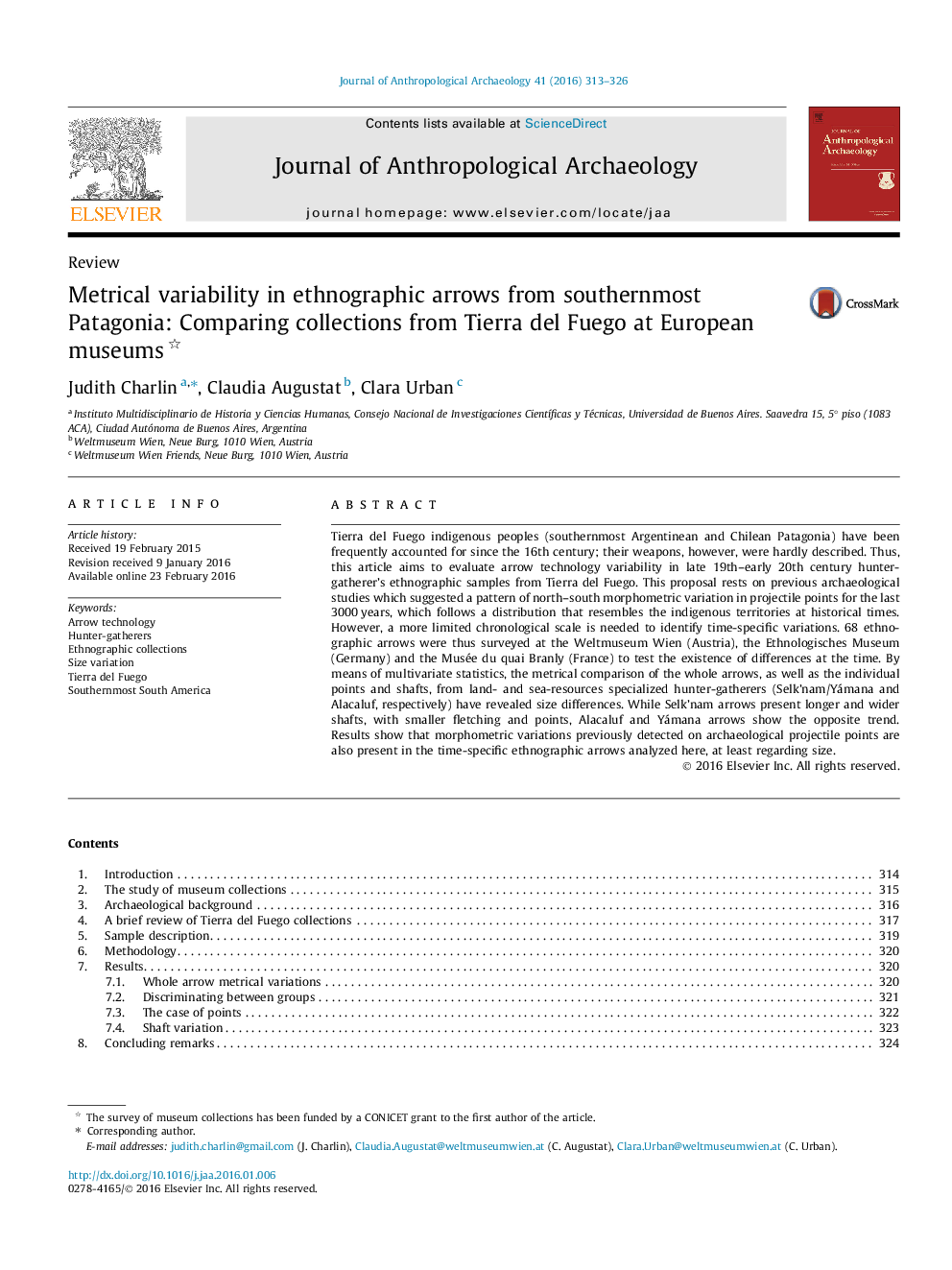| کد مقاله | کد نشریه | سال انتشار | مقاله انگلیسی | نسخه تمام متن |
|---|---|---|---|---|
| 1034888 | 1483849 | 2016 | 14 صفحه PDF | دانلود رایگان |
• We assess arrow technology variability in ethnographic samples from Tierra del Fuego.
• Size differences between land- and sea-resources hunter-gatherer arrows were detected.
• Selk’nam arrows have longer and wider shafts with smaller fletching and points.
• Alacaluf and Yámana arrows show the opposite trend.
• A recurrent spatial pattern is present in ethnographic and archaeological samples.
Tierra del Fuego indigenous peoples (southernmost Argentinean and Chilean Patagonia) have been frequently accounted for since the 16th century; their weapons, however, were hardly described. Thus, this article aims to evaluate arrow technology variability in late 19th–early 20th century hunter-gatherer’s ethnographic samples from Tierra del Fuego. This proposal rests on previous archaeological studies which suggested a pattern of north–south morphometric variation in projectile points for the last 3000 years, which follows a distribution that resembles the indigenous territories at historical times. However, a more limited chronological scale is needed to identify time-specific variations. 68 ethnographic arrows were thus surveyed at the Weltmuseum Wien (Austria), the Ethnologisches Museum (Germany) and the Musée du quai Branly (France) to test the existence of differences at the time. By means of multivariate statistics, the metrical comparison of the whole arrows, as well as the individual points and shafts, from land- and sea-resources specialized hunter-gatherers (Selk’nam/Yámana and Alacaluf, respectively) have revealed size differences. While Selk’nam arrows present longer and wider shafts, with smaller fletching and points, Alacaluf and Yámana arrows show the opposite trend. Results show that morphometric variations previously detected on archaeological projectile points are also present in the time-specific ethnographic arrows analyzed here, at least regarding size.
Figure optionsDownload high-quality image (123 K)Download as PowerPoint slide
Journal: Journal of Anthropological Archaeology - Volume 41, March 2016, Pages 313–326
